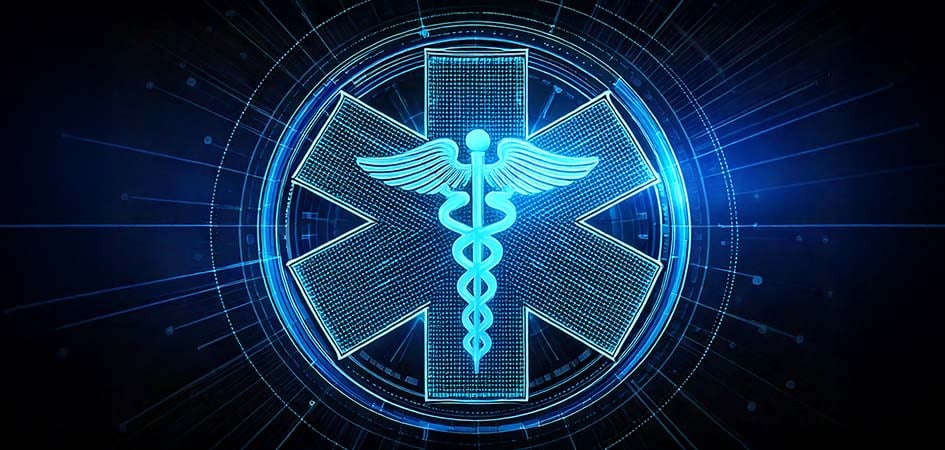Strengthening Healthcare Security: Navigating HIPAA’s Latest Cybersecurity Requirements

Trustwave Research Reveals Cybersecurity Risks Threatening Patient Lives in Healthcare. Learn More
Get access to immediate incident response assistance.
Get access to immediate incident response assistance.
Trustwave Research Reveals Cybersecurity Risks Threatening Patient Lives in Healthcare. Learn More

The Department of Health and Human Services (HHS) will be implementing sweeping and crucial updates to the Health Insurance Portability and Accountability Act (HIPAA) Security Rule to enhance the protection of electronic protected health information (ePHI).
These changes aim to address modern cybersecurity threats and ensure resilience in healthcare data management. In this blog, we will explore the key updates and their implications for healthcare providers and their business associates.
HIPAA was signed into law by President Bill Clinton in 1996 to protect patients' health information and access to healthcare. HIPAA's purpose is to protect patients' personal information, improve the healthcare system, ensure patients have access to their health information, and set federal standards for protecting patient health information.
The process to update began in 2020 with a Notice of Proposed Rulemaking for the HIPAA Security Rule being introduced in December 2024 and added to the Federal Register on January 6, 2025. Then, a 60-day window for public comments on the proposed change began. It was completed on March 7, 2025, and HHS is now processing the comments, will publish the final rule, and will set a date for implementation.
The goal of HIPAA 2.0 is to improve care coordination while maintaining strong protections for sensitive substance use disorder information and to reduce administrative burdens on providers and enhance patient rights.
To accomplish these measures, HIPAA 2.0 includes several sections that address patient rights and consent, but we will focus on the proposed cybersecurity changes.
Trustwave SpiderLabs is deeply involved in researching the cyber threats arrayed against the healthcare sector. The team’s report, Cybersecurity in the Healthcare Industry: Actionable Intelligence for an Active Threat Landscape, detailed the techniques, tactics, and procedures threat actors use to conduct attacks and how valuable these groups consider patient information.
Let’s take a look at the key changes contained in HIPAA 2.0 and what they mean.
Drilling down a bit further, HIPAA 2.0 will require that Healthcare providers keep a detailed list of all their tech gadgets and create a map showing how electronic health information (ePHI) moves through their systems. This helps in spotting risks and keeping information safe.
Providers must do a more thorough job of checking for risks. This means looking at all their tech, identifying potential threats, figuring out how serious those threats are, and updating their records every year or after big changes. Trustwave’s Consulting and Professional Services team can lend a hand here with a risk assessment and business impact analysis.
A new rule requires providers to quickly apply updates and patches to their systems to protect against cybersecurity risks, and the proposal emphasizes that only authorized personnel should have access to ePHI, reducing the risk of internal threats. A Trustwave HIPAA Assessment can help identify any issues.
Providers must regularly review and document activities within their electronic systems to detect and respond to security incidents. Additionally, to minimize the supply chain risk, healthcare providers must ensure their business partners also have strong security measures in place to prevent data breaches and compliance issues.
Once implemented, the likely outcome is that providers will be handed more responsibility. Essentially, every healthcare provider and partner must ensure all electronic health information is secured, removing any previous misunderstandings about selective implementation.
The removal of the optional/required distinction means entities must meet all specified security standards, which could increase compliance efforts, especially for smaller providers. There will also be a focus on cyber resilience. Organizations will need to invest in security measures that not only prevent breaches but also ensure quick recovery and continuity of operations.
Trustwave is a globally recognized cybersecurity leader that reduces cyber risk and fortifies organizations against disruptive and damaging cyber threats. Our comprehensive offensive and defensive cybersecurity portfolio detects what others cannot, responds with greater speed and effectiveness, optimizes client investment, and improves security resilience. Learn more about us.
Copyright © 2025 Trustwave Holdings, Inc. All rights reserved.